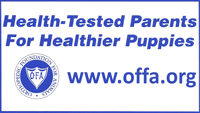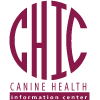
Many of you will be preparing to bring your puppy in for spay or neuter surgery. Generally, the surgery is scheduled around six months of age. What exactly does the surgery entail? What should you expect afterwards? Should you consider waiting until your Havanese is 12 months old?
This specific article was carefully selected for you in order to provide you with the most reliable information.
Introduction to spay and neuter
At Renaissance, we have had several dogs altered, by rule our females are only bred 2-3 times before they are spayed. Over the years we have have had several dogs altered at all different ages. I wholeheartedly believe that a dog that has been spayed or neutered needs to be nurtured. Most times, your dazed puppy is handed back to you and you’re given a sheet of paper and told to feed them just a little and call if your dog has any symptoms on the list. All dogs especially female dogs (spay is a hysterectomy & major abdominal surgery)are sensitive to surgery. In many cases, your Havanese will be lethargic and not interested in eating. Sometimes, they can be the opposite, other times they can return anxious and if there is a cone of shame involved, they can be completely upset by this. Don’t despair, with some advanced planning and knowledge, you can be a great help to your pet.
First of all should you wait? The decision when is up to you, but we do recommend, based on the latest research and studies, that you wait. Does that sound like an irresponsible breeder? Perhaps not following status quo seems unconventional but armed with information, we believe it is in the best interest of the our companion pets because we love our pets and want them to thrive. Now, it means that you have to be a responsible owner and take simple precautions until such time when your pet will be “fixed”. We want for you to make an informed decision, please research further. See Landmark study.
purchase Lyrica canada Pre-op bloodwork is a must for all dogs. This is the best way to confirm that the internal organs are healthy enough for anesthesia. Generally, this has to be done in advance of the day of surgery.
http://civilwarbummer.com/page/19/ Weight. Find out the weight of your puppy from the Veterinarian so you will know how much of any medication or supplement you need to use.
No Vaccines. This is not the recommended time for a vaccination. Vaccines engage the immune system. Your dog needs an immune system that is not busy in order to heal from the surgery and anesthesia, so it would be wise to hold off for a couple weeks.
Blanket. When I drop my puppy off for surgery, I bring along a blanket and ask the technician to put this blanket in with my puppy when they are placed in the recovery kennel. If you have children, it may help ease the anxiety of being separated from their puppy by having them sleep with the blanket the night before and tell them that in this way their puppy can have them “close by” after their surgery.
I make sure that I have a couple essential items on hand to nurture my puppy during recovery. These items include:
Probiotics. In most cases your Havanese will be either given an antibiotic shot or sent home with antibiotics. It’s important to know that a healthy gut translates to a healthy immune system. Antibiotics while helpful in some instances, can also destroy good bacteria which may lead to dysbiosis or imbalance in the gut. If I am giving my Havanese an antibiotic and I want to supplement with Probiotics, I always give them a couple hours a part. I also use natural antibiotics like plain kefir which in small doses can help. I would start with just 1 tsp twice daily and as long as my dog seems to be tolerating it, I will increase to three or four tsp daily. Kefir is free of lactose.
Nutri-Cal® a high-calorie meal replacement that contains beneficial vitamins and calories, essential for energy. So my dog is still getting the benefits of a meal without the effort of having to eat and it is the bulk of kibble or canned food in the belly which contributes to a sick stomach, the very reason why we are instructed not to offer them a full meal.
Canned puppy food. This can be used if your Havanese is refusing to eat, it takes less energy to eat it and it’s high in calories so they can eat less and still gain nutrition.
Organic chicken stock. I choose stock for the simplicity of ingredients. The broth is very dense and often contains a lot of salt and other ingredients such as MSG. I offer water first but in the event that my puppy refuses to drink it, I will offer stock. I continue alternating between offering water and if there is still no interest, offer the stock and eventually dilute the stock with water (1:1) for the rest of the evening. The goal is to encourage my puppy to drink more because this will cleanse the body by flushing out the anaesthesia. Drinking should be encouraged for the next few days.
K9 Immune Dog™ With an older adult dog, I will use this product four weeks prior to surgery. This product should be continued after the surgery. It can also be used for a young dog following surgery.
Sodium Ascorbate Powder (Vitamin C) Dogs naturally make ascorbic acid but can be deficient during times of stress or illness. Giving vitamin C to dogs during this time is common practice among some Holistic Veterinarians. Dosage would be based on weight of your Havanese. Here is some information to help you determine if Vitamin C would be appropriate for your dog. https://www.whole-dog-journal.com/food/benefits-of-vitamin-c-to-your-dog/
Cozy Den. When my puppy comes home, I want to make sure that his crate is very comfortable, soft bedding is a must, especially for females who are often the most uncomfortable. In addition to a crate pad, I will line the crate with fleece blankets. I will cover three sides of the crate with a sheet and allow them to rest in a quiet space. At night they remain close by.
A water bottle. I place the water bottle wrapped in a towel in a corner of the crate so that the puppy can decide to use it or not. A water bottle is the safest alternative to providing a little heat. TIP: Large water bottles AKA enema bags kits are available at a pharmacy.
Wee pads. Before you get concerned that allowing your housebroken puppy to once again use a pee pad, please read on. When you bring your puppy home, they often have little energy and are in no condition to get chilled. A pad not only provides easy access to relieve themselves without the risk of getting chilled. It also allows me to monitor that they are relieving themselves adequately and that there are no abnormalities like blood in the stool or urine. A couple of days of this will not undo your puppy’s housebreaking.
Coughing after surgery. This is usually caused because of irritation to the throat due to intubation during surgery. However, if it persists beyond a few days, it could be Bordetella (kennel cough) acquired at the Veterinary hospital. While some Vets treat it with a dose of antibiotics, most dogs recover from this common condition (cold) without treatment.Vaccination does not provide100% protection.
Infrared Light Therapy or Red light therapy. My personal favorite. This NASA technology uses infrared light to stimulate the body to heal itself. It is a non-invasive, non-pharmaceutical, painless technique. Unfortunately, this quick and inexpensive treatment it is not widely available and not generally supported by traditional Veterinary medicine. I am lucky to have it available in my area and you may be able to find a contact with a holistic Veterinarian. There are products available online.
Cuddles. There is nothing more healing for you and your Havanese than a sweet time spent cuddling. Especially when it is recommended that they be kept calm for a time while they heal. Make the time to be there, enlist your children to be their pet’s doctor, it’s a great time to teach them about surgery, healing and compassion.

